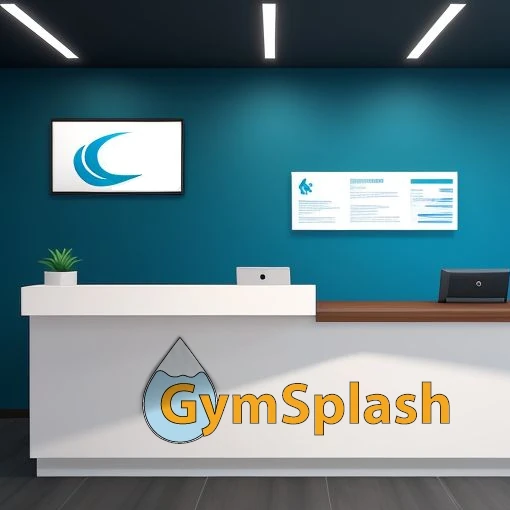For fitness facility owners and online coaches working on your business’s marketing campaign efforts, focusing the messages to reach your various targeted gym audience types is critical to success. We often discuss the importance of establishing your facility’s target audience here at GymSplash, but it is also important to realize that there are frequently sub-sets of categories and types within this group of ideal clients.
So that is why we are going to break it down and dive in deep with what typically goes into defining your general target audience, how to determine your gym’s various audience types, how to build this idea of sub-set groups into your company’s marketing campaigns, and ultimately how to track and gauge success in each category. So grab a pen, paper, and a floaty cause we are about to jump in and #MakeASplash
What Goes Into Defining Your Target Gym Audience
I know we said we discuss the importance of defining your personal training facility’s target audience all the time, but in a blog post discussing the breakdown of gym audience types within that primary group, you know we have to start with the basics! So, let’s get down to business.
When starting your fitness business, you should identify the customers or users of your goods/services. While this topic may seem too easy, many fall victim to an over-generalized identification of this group. Such examples of too broad of an audience would be “people wanting to get fit” or “men trying to shed some weight.” Some reading this may think the second example is a little closer due to the specified gender call-out; however, we are here to say that it is still over-generalized for a successful business to work off of.
Building out a proper target audience for your personal training studio or gym requires honing in on details of relevance for your business. Some of the standard fitness business-focused characteristics to consider are:
- Gender
- Age (Range/Category)
- Physical Fitness Level
- Goals
- Income
- Geographic Location
- Lifestyle (Active/Sedentary/Professional/Traveler/etc.)
These attributes are a great launching point for curating the group details to build your ideal client base. It is worth noting two points before we move on, though. First, this list is optional; if there are points you think you should add or skip, do that – this is only here to help get you thinking about your audience more modularly. Second, if you are putting in the effort to work on this, document your work – this can help in the next section as well as in the future when reviewing your marketing efforts or growth/business plans.
Can You Have Multiple Gym Audience Types?
Yes, and you should. Running through the practice mentioned above to define your target audience is monumental to your online or in-person training business’s long—and short-term growth potential and success. However, you may have found yourself with multiple answers to each question or even different scenario-based responses. With these multiple options, we can start establishing categories or group types within your training center’s target audience.
Consider the different combination potentials within your general attributes list and assemble them. Some marketing agencies call this “persona building,” but the concept involves creating different customer profile types that you are ideally catering to your business and services. A quick example highlighting the process could look like these two different profile types for men and women who fit other points, including millennials, professionals located within 10 miles of the studio, currently active, and looking to boost endurance/strength/athleticism.
You can create numerous client profile types; however, the influential factor to consider is “why” you are doing this process specifically. The main driver to establishing these is customizing your unique selling proposition to help promote better business results.
Growth from these profiles can come from more innovative advertising and marketing returns as you can better align your business to each type at the various buyer’s journey points (awareness, engagement, and conversion). Outside of marketing, you will better understand what makes your audience tick, which can help you set up processes to keep your clients feeling appreciated, interested, and invested in your facility. This type of client-specific progress ultimately helps increase your studio’s client retention rate on the backend while also improving the conversion rates on the front end.
Building Your Gym’s Various Audience Types Into Campaigns
As you develop your personas or different gym audience types, you must implement this information. The best places to leverage highly specified customer information are in your advertising or marketing initiatives and in the customer service or experience aspects of your business. However, we will direct our attention to the marketing side for this blog.
From the marketing side of growing your fitness business, your gym’s sales funnel requires leads to come in consistently at the various stages and efficiently work to the final conversion point. With this in mind, it is essential that your marketing materials and content not only capture the attention of your prospects but also draw them in and leave them wanting more. Therefore, utilizing the various persona details within your target audience can help give you an edge when creating materials that would be directly appealing to them.
Building specific tactics (or mini-advertising campaigns) within your fitness studio marketing campaign can help you achieve higher success rates. This advantage comes from more targeted messaging to your gym audience types directly. You can see growth by utilizing the information by addressing specified pain points, unique selling propositions directly aligned with their needs, or even event/class-based opportunities aligned with their demographics.
Monitoring Results and Refining by Audience Segment
Like typical gym marketing campaign optimization, you can monitor the progress of these specific audience tactics or ads. By building unique campaigns in your advertising platforms, separate materials, or campaign trackers/distinct landing pages, you can help differentiate traffic, results, and overall success of each endeavor.
Further, implementing multiple variations of your messaging, imagery, landing pages, or call-to-actions can enable you to A/B test your materials quickly and effectively. These rapid tests help boost success in various goal factors and optimize your ad spend for the most prosperous materials. Since you are working within defined customer type segments, you can get specific within each category to further fine-tune your overall campaign return on investment (ROI) and gym profitability.
Making A Splash
Marketing campaigns for fitness businesses tend to involve multiple channels, initiatives, and tactics; however, one of the core driving factors for information and content within these campaigns is the target audience. Breaking down your core audience into segments of different audience types for your gym can help you boost your messaging, marketing, and advertising effectiveness as it pertains directly to their unique needs or interests. By following up on your programs by monitoring, testing, and optimizing, you can ensure that you are leading with your best materials and getting the best bang for your dollars and effort.



